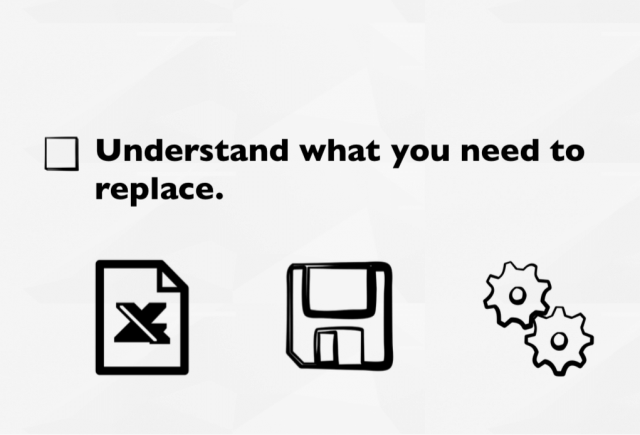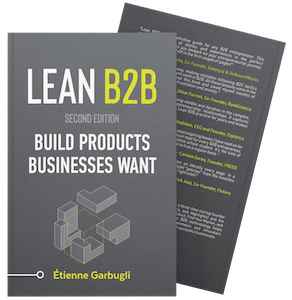Though rarely perceived as a competitor, Microsoft Excel is almost always an actual competitor for software startups. – Joshua Porter, Ex-HubSpot Director of User Experience
In large companies, the core business functions are well served by technology vendors. There’s Intuit for finance, Taleo for recruitment, Salesforce for CRM, and Microsoft for almost everything else.
But, Intuit, Taleo, Salesforce, and Microsoft didn’t start with large solutions addressing the needs of every customer. They started with a subset of what their products can do today.
As a small and scrappy startup with limited resources, you must identify where your solution fits in the market and how it works with your prospects’s technology platforms. The best beachheads come from capturing emerging processes and opportunities.
Are businesses quickly changing the way they do marketing? Are there ways to capture those new processes?
It’s good to have a vision for the end product, but early on, you won’t be able to go for the big win. Unless you’re bringing some kind of disruption to the market, you can’t position your solution as an all-in-all platform. You need to find the gap you’re going to fill.
Startups that solve real business problems always have to replace some kind of solution.
Maybe it’s a manual process, an Excel spreadsheet, or a legacy solution that never quite solved the problem completely. To find your gap, you have to understand the substitute products (your competition), and what you’re enabling (your solution’s value).

In other words, you must figure out how your solution is differentiated and whether that differentiation is valued by prospects. This, in a lot of ways, is a perception game. Often times, perceived comparables and perceived value matter more than real competitors and real value.
How to Compete Against Substitute Products
You can have the greatest product in the world, but if your prospects think your solution is just like Dropbox, you’ll have a hard time charging more than Dropbox. Your perceived comparables matter more than how different you think your product really is.
In the same way, if prospects don’t perceive your solution as valuable, it won’t matter what benefits it provides. The only value that matters is the value that prospects perceive from your product. What impact do they feel it has?
Think less about the direct competitors and more about how your solution can fit in their technology mix. For startups, substitute products and the status quo are typically more dangerous competitors than large incumbents.
Understand the technology mix, play nice with the existing solutions, find your fit and beachhead, and then expand to take over the world.
Download the First 4 Chapters Free
Learn the major differences between B2B and B2C customer development, how to think about business ideas, and how to assess a venture’s risk in this 70-page sampler.
Working on a B2B Startup?
Learn B2B customer development with our free email course:


